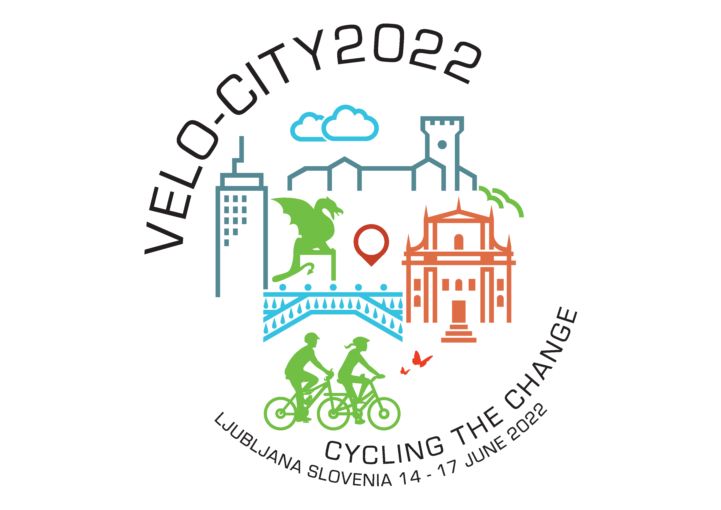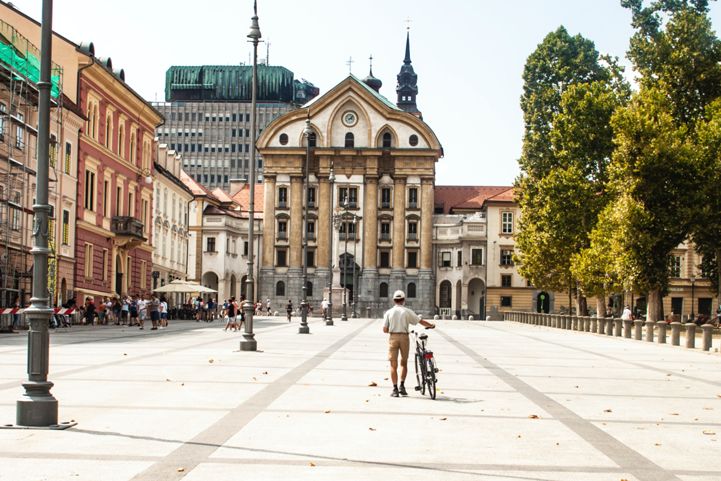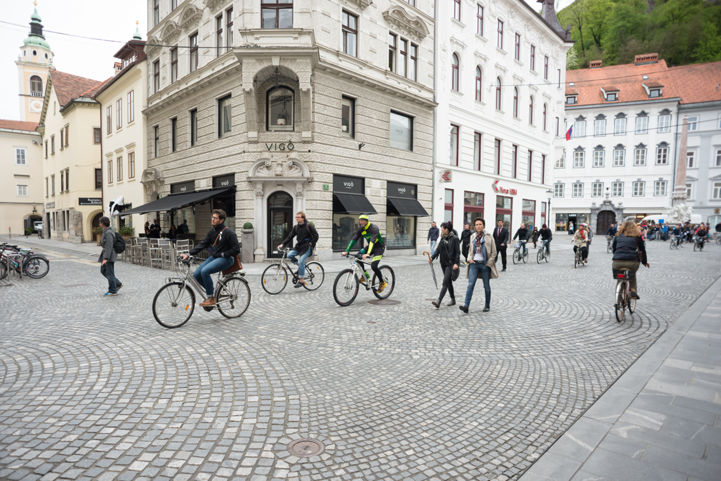Green tourism takes centre stage at Velo-city 2022 in Ljubljana
If you are going to be one of 1,400+ delegates heading to the Slovenian capital in a few weeks’ time for the Velo-city conference then we have tried to provide a short overview of some of the highlights in the packed programme from the perspective of cycling tourism and cycle route network development. With over 250 speakers in over sixty sessions, the Velo-city conference series serves as a global platform for knowledge exchange and policy transfer to encourage the use of cycling as part of daily transport and recreation. One of the key theme’s of this year’s event is Green tourism, green economy and there are a number of sessions dedicated to this topic towards the end of the week, including the plenary session on Thursday morning.

THURSDAY 16 JUNE 2022
Plenary 5 : Green tourism, green economy (09:00-10:30)
In recent years, cycling tourism has moved into the mainstream. According to data from ADFC, 42 million Germans took at least one day trip by bike in 2021. That's eleven million more than in the previous year! This growth has significant benefits for the wider tourism sector and European society more generally. In this session we will be exploring why cycling tourism is perfect tool for a green transition of the tourism sector and how it brings us closer to a decarbonised future while at the same time supporting local economies. We'll also consider how it can introduce more people to everyday cycling.
Will feature interventions from Alessandra Priante (Director Europe, United Nations World Tourism Organisation UNWTO), Petra Stusek (Managing Director of Ljubljana Tourism and re-elected President of the Board at City Destinations Alliance, Ljubljana Tourism), Henk Swarttouw (ECF President, European Cyclists’ Federation), Blaz Kurnik (Head of the EEA Climate Change Impacts and Adaptation group, European Environment Agency), Alex Crevar (Journalist, Editor, and Consultant dedicated to responsible tourism), Camille Thome (CEO, Velo & Territoires) and Thomas Larsen Schmidt (President, International Mountain Bike Association).
Cycling tourism on the rise: Using data for growth (11:00-12:00)
Over the past few years, many European countries have experienced a cycling boom. This trend is particularly noticeable in relation to leisure cycling and cycling tourism. This development is at the forefront of the emergence of more sustainable tourism patterns in Europe, something which is increasingly influencing consumer behaviour. But how can destinations take advantage of the increasingly numbers of people taking to the saddle for their vacations? In this session we will explore some of the key trends in the expanding cycle tourism market and highlight what destinations can do to attract more visitors while benefitting their local communities at the same time.

Sava Cycling Route: Back-bone of cycling network in South East Europe (12:15-13:15)
The idea of the Sava Cycling Route has been present for more than 20 years and was started by enthusiasts from the region along Sava River and then supported by the International Sava River Basin Commission (ISRBC). This cycling route will provide a huge boost for the development of the bicycle traffic in the towns and municipalities along the Sava in Slovenia, Croatia, Bosnia and Herzegovina and Serbia. In the last five years countries involved started developing national action plans for the development of cycling infrastructure and establishing the National EuroVelo Coordination Centers. With these efforts, the Sava Cycle Route became the back-bone of the cycling infrastructure network in national cycling infrastructure plans and further developed into cycling tourism products. Join this session to hear more about the development and potential of the Sava Cycle Route brand and cycling tourism in the region as well as challenges and opportunities the cycling can offer for further development.
Exchange on cycling data (12:15-13:15)
This session is meant to be a place for exchange between experts from local and regional authorities and their networks, advocacy groups, national administrations, companies working on data collection, the bicycle industry, and all other interested stakeholders. After a few introductory presentations, participants are invited to share and debate their successes, challenges, needs, and questions with regards to cycling data collection. The goal is to start a dialogue that will ideally last beyond this edition of Velo-city, and will help to better coordinate efforts in this field in the future.
Standing out from the crowd - innovation in cycling tourism (14:30-15:30) With more cycling tourism products and new audiences coming onto the market, being able to stand out from the crowd is becoming increasingly important. In this session, we will look at some of the products, services and latest trends to consider if you are wanting to innovate in the growing cycling tourism sector.

FRIDAY 17 JUNE 2022
Cycling tourism off the beaten track (09:00-10:00)
It is estimated that cycling tourism brings in over €44 billion to the European economy every year. In this session, we will look at how cycling tourism can bring tourism to less visited areas, which actually is one of the charms of cycling adventures. And explore different strategies on how destinations, especially those in rural areas, can benefit from the growing potential of the sector, whilst ensuring that local communities are not left out of the picture.
TEN-T: Are large infrastructure projects a threat or an opportunity for active mobility? (10:15-11:15)
Roads and railways of the trans-European transport network (TEN-T) often constitute a barrier for walking and cycling. But TEN-T projects can also be an opportunity to create new connections or even prioritise active mobility. If critical walking and cycling facilities are integrated in TEN-T projects, infrastructure can be used more efficiently, higher quality and more functionality can be provided for a lower price. On the other hand, if the opportunies are missed during initial design and construction, mistakes are very expensive and difficult to rectify. As the TEN-T policy is currently under review by the European institutions, we have now a window of opportunity to systematically integrate walking and cycling into the TEN-T.
The full programme is available to view here. We look forward to seeing many of you there!